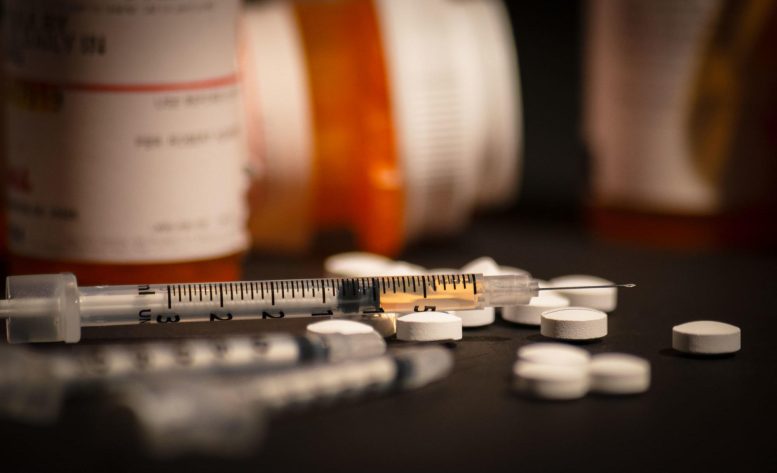
New research reveals that over 80% of New Yorkers who inject drugs have tested positive for the opioid fentanyl, despite only 18% reporting intentional usage, indicating widespread unknowing usage which could raise overdose risks. With drug overdoses tripling in New York City since 2013, largely due to fentanyl’s increasing presence, the study’s lead author emphasizes the need to monitor exposure rates, changes in user preference, and to implement novel strategies for reducing overdoses such as increasing support for overdose prevention centers and research.
Research reveals widespread fentanyl usage among New York City’s intravenous drug users, despite a strong preference for heroin.
A recent study conducted by the NYU School of Global Public Health revealed that over 80% of New York-based individuals who use injectable drugs are testing positive for the opioid fentanyl, even though just 18% of them report using it deliberately.
The research, published in the International Journal of Drug Policy, indicates that a significant number of individuals injecting drugs might be inadvertently using fentanyl. This unwitting usage could heighten their likelihood of overdosing and potentially elevate their fentanyl tolerance if continually consumed.
In 2021, more than 100,000 people died of a drug overdose in the United States, with 66% of these deaths involving illicit fentanyl—a synthetic opioid that is 50 to 100 times more potent than morphine.
In New York City, drug overdose deaths have more than tripled since 2013 when fentanyl began to regularly appear in the illicit drug supply. Since 2017, fentanyl has been the most common drug involved in overdose deaths in New York City.
Research shows that people who take drugs may use fentanyl unintentionally, thinking that they are instead using heroin or another drug. However, more recent studies show that some people are aware of their fentanyl use and may seek out fentanyl or heroin mixed with fentanyl.
“As the proportion of drug overdose deaths involving fentanyl continues to increase, it’s important to monitor how often people are exposed to fentanyl and any changes in preference for fentanyl among people who use drugs,” said Courtney McKnight, clinical assistant professor of epidemiology at NYU School of Global Public Health and the study’s lead author.
To understand the pervasiveness of fentanyl use in New York City, McKnight, and her colleagues conducted surveys and in-depth interviews in 2021 and 2022 with people who inject drugs. In the 313 surveys and 162 interviews, participants were asked about their drug use, including whether they used fentanyl intentionally in the last month, and their experience with overdoses. All survey participants underwent drug testing for fentanyl, heroin, other opioids, and stimulants so that researchers could compare toxicology results with self-reported drug use.
The toxicology results revealed widespread use of fentanyl among people who inject drugs in New York City. Fentanyl was the most common recently used drug, with 83% of participants testing positive for it (including 46% who tested positive for both fentanyl and heroin and 54% who tested positive for fentanyl without heroin). However, only 18% reported recently using fentanyl intentionally; most reported using heroin instead.
“The overwhelming majority of people in this study—regardless of the intentionality of recent fentanyl use—reported heroin as their main drug, indicating a strong preference for heroin over fentanyl. Yet, as our urine toxicology data indicate, people who inject drugs seem to have little agency in avoiding fentanyl,” said McKnight, who is also a researcher with the Center for Drug Use at HIV/HCV Research at NYU School of Global Public Health.
Nearly one-quarter of participants had overdosed at least once in the previous six months, with 36% of those who intentionally used fentanyl experiencing a recent overdose, compared to 21% of those who reported no recent fentanyl use but tested positive for it, and 19% who reported no recent fentanyl use and tested negative for it. People who intentionally used fentanyl were also more likely to be younger, white, use drugs more often, and test positive for stimulants, among other characteristics.
In both the surveys and interviews, concerns about overdosing were common, with nearly all participants using strategies to prevent overdose, including keeping naloxone (a drug that can reverse an opioid overdose) nearby, using smaller amounts of drugs, using drugs around others, and having a trusted dealer.
“Nearly every person discussed the increased frequency of overdoses—a constant reminder of the lethality of the drug supply. A few said that the regularity with which overdoses were occurring in New York City was like nothing they had ever experienced,” said McKnight.
The interviews also revealed that people who inject drugs may be developing an increased tolerance to fentanyl, which may be driving a greater preference for the more potent drug. Several people interviewed reported that the potency of heroin has declined, which may indicate a developing but unintended tolerance to fentanyl that heroin can no longer address.
The researchers say the findings point to the need for scaling up existing evidence-based methods to prevent overdose deaths, such as naloxone distribution and increased access to medication for opioid use disorder. However, given the prevalence and deadliness of fentanyl, they stress that novel strategies to reduce overdoses should be considered, including increased support for and research on overdose prevention centers, and other forms of opioid maintenance treatments in which people who use drugs are prescribed opioids to avoid drugs tainted with fentanyl.
“New York City is home to the country’s first two legally sanctioned overdose prevention centers, which opened in 2021 and have already saved hundreds of lives, but more support and access to these programs are needed to further reduce overdose mortality,” said McKnight.
Reference: “Understanding intentionality of fentanyl use and drug overdose risk: Findings from a mixed methods study of people who inject drugs in New York City” by Courtney McKnight, Chenziheng Allen Weng, Marley Reynoso, Sarah Kimball, Lily M. Thompson and Don Des Jarlais, 2 June 2023, International Journal of Drug Policy.
DOI: 10.1016/j.drugpo.2023.104063
The study was funded by the National Institute on Drug Abuse.
Additional study authors include Allen Weng, Marley Reynoso, Sarah Kimball, Lily M. Thompson, and Don Des Jarlais of NYU School of Global Public Health.









Unintentional? Nope…
Neither from the supplier/dealer nor the buyer….want the high? Use the fentanyl laced ones….c’mon….what a pack of “unscientific lies”